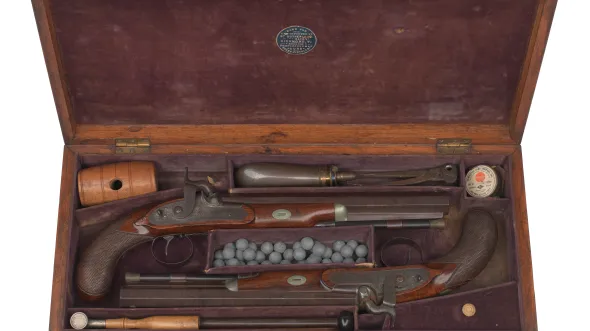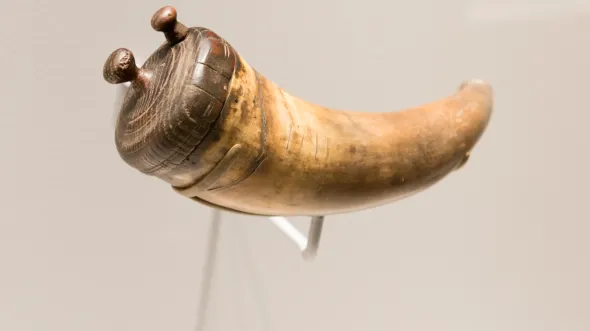From providing protection from enemy combatants to finding dinner for a family, weapons have played a significant role in Virginia history. A past exhibition, Arming the Commonwealth, made possible by the Cecil R. and Edna S. Hopkins Family Foundation, explored how the state became a hub for weapon manufacturing and how Virginians used them in their everyday lives.
Following the American Revolution, Virginia was the only state to arm its militia fully with locally manufactured weapons. In its short operational history, the Virginia Manufactory of Arms produced more than 58,000 muskets and bayonets, 10,000 swords, 4,000 pistols, and 200 artillery pieces for the state militia. Later, the U.S. Congress, recognizing the problem with relying on foreign countries for weapons, designated two sites for armories. One was Springfield, Massachusetts; the other was Harpers Ferry, Virginia (now West Virginia).



